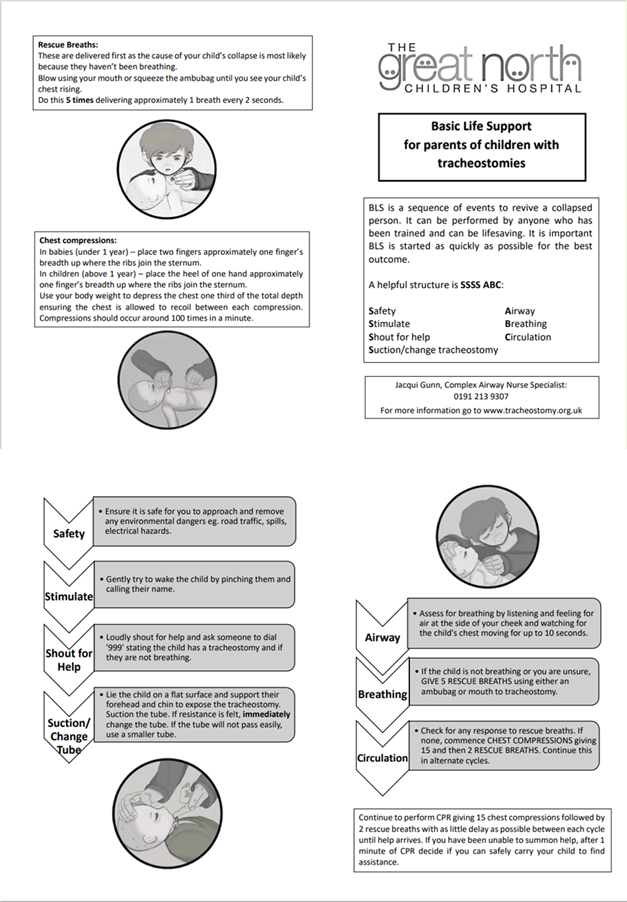Basic life support for children with tracheostomy
Basic life support (BLS) includes recognising and responding to emergency situations. It reminds you to always call for help. BLS gives you a simple steps on to provide emergency care and to support your child's airway, breathing and circulation. BLS should be delivered by the person who is with the child while waiting for help. It can help to revive a child in the event of an emergency.
If your child has a tracheostomy, you should have received basic life support training in hospital. BLS is different for babies and children than in adults. There are also some important differences in a child with a tracheostomy, but the order of steps is the same as for any child.
If your child has stopped breathing or is not breathing effectively, start BLS.
Airways
Change the tracheostomy tube if you have not already done so. It is essential to do this even if you do not think the tube is blocked.
Breathing/oxygen
Provide rescue breaths either via mouth to tracheostomy tube or using an ambubag if you have one.
Circulation
Start CPR performing compressions on your child’s chest as you have been previously instructed.
Downloadable leaflet you can print if you wish to keep in your tracheostomy box.
Infant basic life support
Difficulty inserted a tracheostomy in a child with a RED BOX
Child basic life support
Difficulty inserting a tracheostomy in a child with a BLUE BOX



